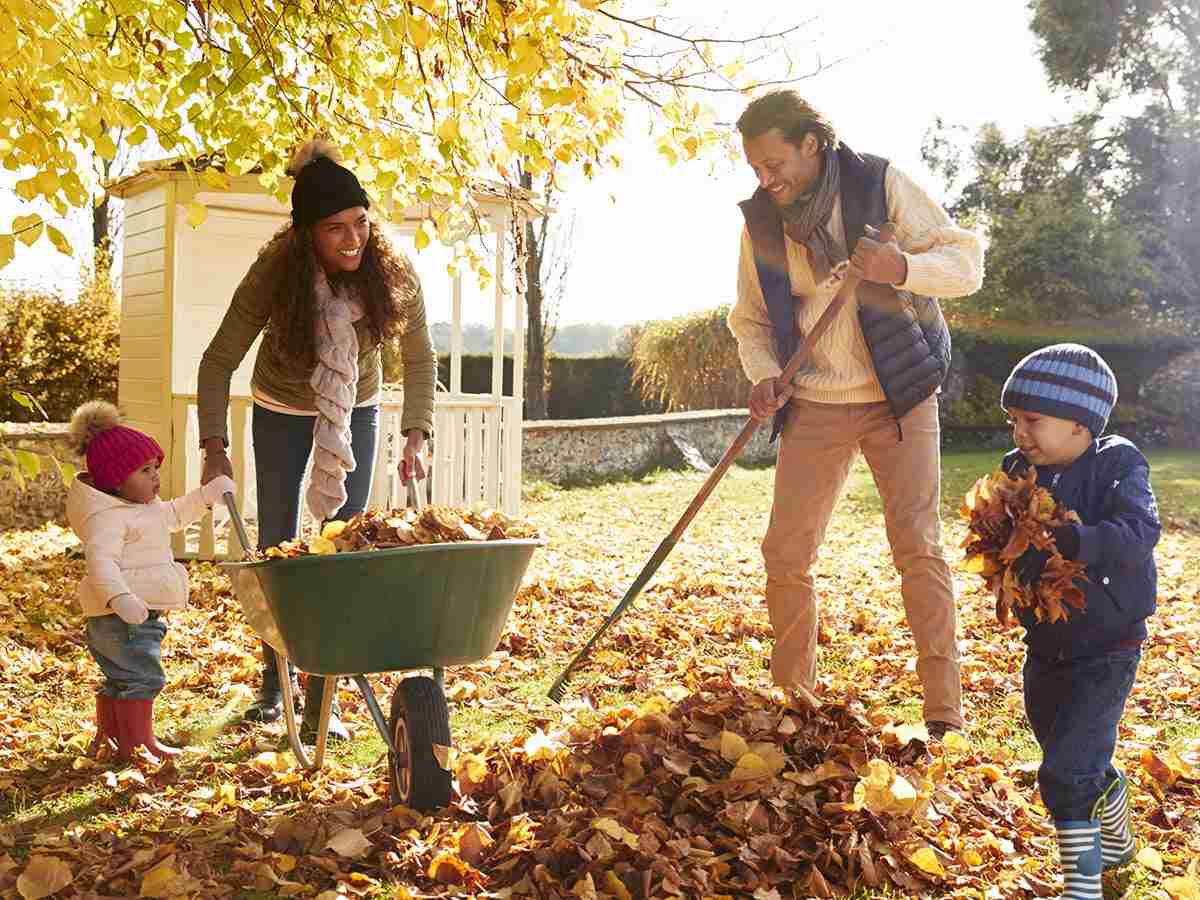Fall home maintenance tips

Fall is a good time to do some home repairs and maintenance so you can keep warm and dry during the long winter months. After all, every home needs a little TLC to maintain its value and keep the homeowner comfortable.
Exterior maintenance
Keeping the exterior of your home in good condition not only helps it look good, but it can also save you money and the headaches that go along with it.
Foundation
Your foundation needs special attention to prevent water from seeping in as the weather warms up and during thaws. Inspect it thoroughly, both inside and out. If you see cracks that are more than 0.3 cm wide, or any signs of efflorescence (white deposits), seepage or humidity, ask a professional to look into the matter.
Roof
Assess the condition of your roof or have a roofing professional inspect it to ensure that it's ready for winter. Make sure the seals around the chimney, skylights, and vents are in good condition and that there are no missing or loose shingles.
Gutters
Clean gutters and downspouts and replace damaged sections. It may be a good idea to install leaf guards that allow water to go through while preventing leaves and other debris from accumulating. Gutters are designed to keep rainwater away from the house so if your gutter is blocked, water can overflow onto your property and even seep into the basement.
The grading around your house also helps drain runoff water from the foundation. Make sure you have a small slope that runs for at least 1.8 m from the house.
Driveway, yard and porch
Repair cracks in sidewalks, steps and driveways with concrete or special-purpose sealant to prevent damage during winter. Store summer equipment (lawn mowers, leaf blowers, gardening tools) and prepare winter equipment (shovels, snow blowers, etc.). Clean, repair and store your patio furniture and barbecue for next spring.
Outdoor faucet
If your home has a frost-free outdoor faucet, remove the garden hose and make sure the faucet is completely turned off. If you have a standard faucet, drain it to prevent it from bursting when temperatures dip below freezing.
Interior maintenance
Fire prevention, water damage and energy efficiency should be your top priorities when preparing your home's interior for winter.
Sealing and insulation
As there’s more precipitation than normal in the fall and winter, check the airtightness of your doors and windows to prevent water seepage. Airtight doors and windows could also help reduce your electricity bill. If necessary, add weatherstripping or caulking.
Plumbing
Water damage is a real nuisance for properties as it may uncover hidden issues such as mould. Make sure your pipes and everything around is dry: the pipes under your sinks, washing machine and dishwasher inlet hoses, and the floor around toilets, the washing machine, dishwasher and water heater. Further, water heaters have a limited lifespan, which is generally around 10 years. It’s therefore necessary to pay particular attention to it (leaks, corrosion, seepage, etc.) and plan its replacement in the short term.
If you really want to reduce the risk of water damage, there are now leak detections systems that automatically close the water intake valve when a leak is detected. No more leaks, thanks to detectors installed close to your home's major plumbing appliances!
Heating and fireplace
Check the condition of your heating system and fireplace. To ensure optimal performance, have your heating systems inspected by a licensed professional, especially if you notice any signs of malfunction such as a noisy belt.
If you have a fireplace or wood-burning appliance, it's important to have your chimney swept at least once a year to remove creosote and blockages. A buildup of creosote can result in a chimney fire. And, blockages can put you at risk of carbon monoxide poisoning.
Humidifier
If you use a humidifier to make the air in your room less dry and comfortable during the winter, be sure to clean your unit and its filter, or, replace the filter as needed to prevent the growth of bacteria and mould buildup.
Ceiling fan
To reduce your heating costs in winter, reverse the direction of your fan blades to create an upward draft helping to better distribute warm air from the ceiling. During winter, the blades should be turned clockwise.
Smoke and carbon monoxide detectors
Make sure the smoke and carbon monoxide detectors in your home are working properly; clean them and replace the batteries once a year. Better yet, install detectors with a 10-year lifespan to avoid the yearly replacement of batteries.
Finally, give your home a thorough cleaning. Get rid of the things you no longer need such as newspapers and old household cleaning products and chemicals to keep your home clean and safe. Learn more about responsible disposal of toxic waste.
Other topics of interest:
How to prevent snow and ice damage on your house
5 ways to prevent your pipes from freezing (and what to do if they freeze anyway)
These tips are provided for information and prevention purposes only. They are general in nature, and The Personal cannot be held liable for them. We recommend using caution and consulting an expert for comprehensive, tailored advice.
